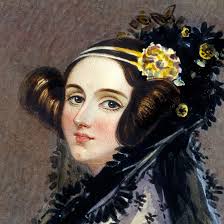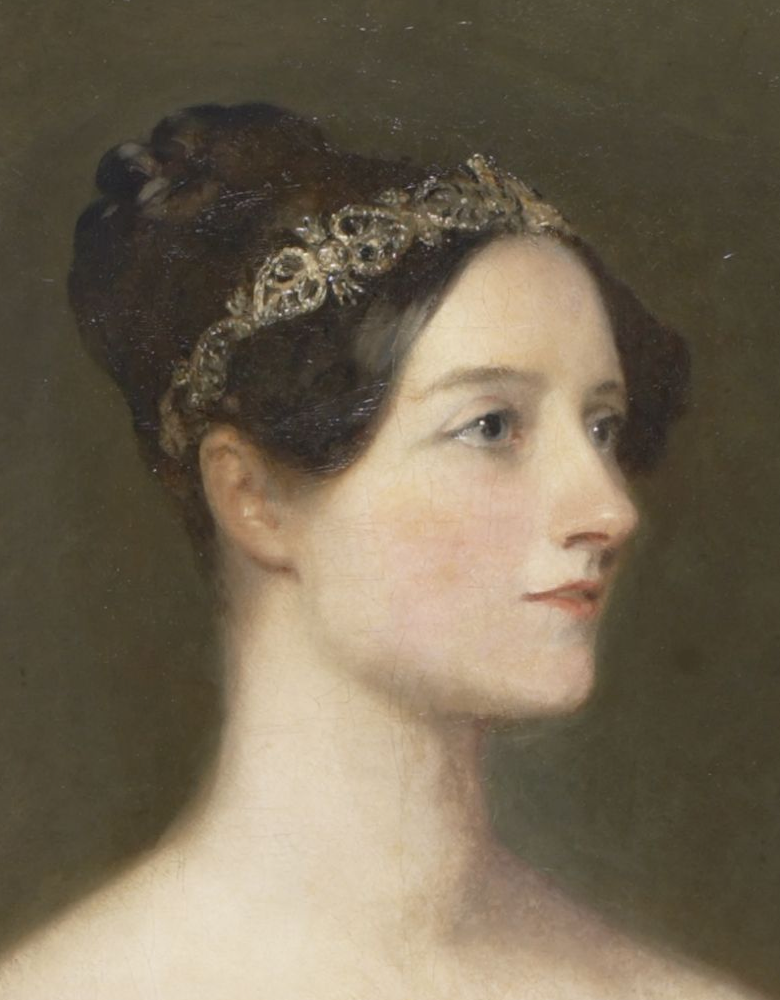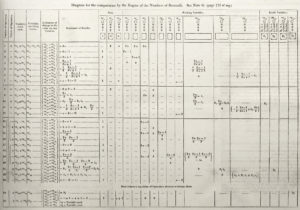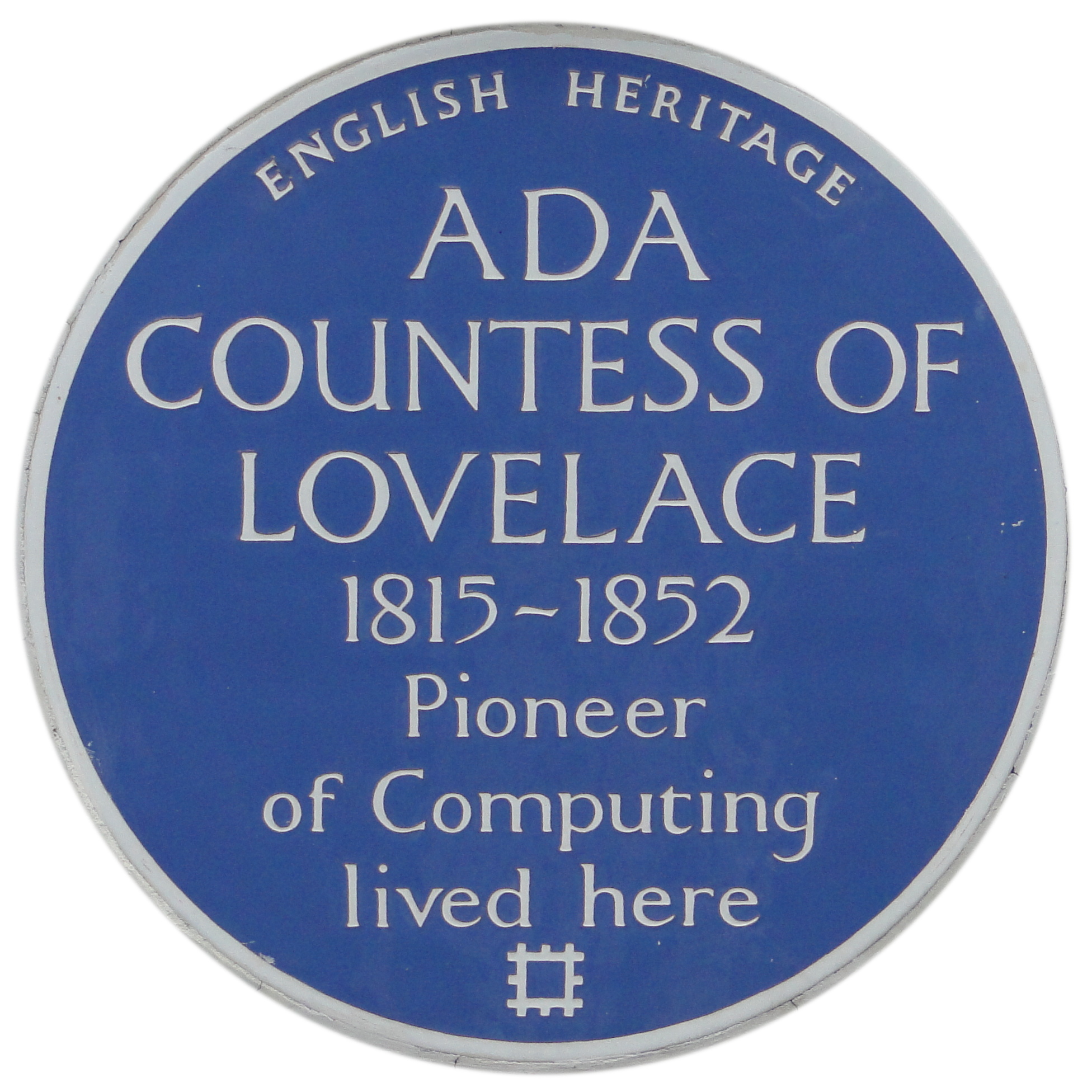
Ada Lovelace: Weaving Algebraic Patterns Like Looms Weave Flowers and Leaves

Ada Lovelace, detail of a portrait by Margaret Sarah Carpenter, 1836, Public domain, via Wikimedia Commons
Ada Lovelace is largely credited with having written the first computer algorithm. She is also recognized as being the first to understand how a mechanical calculator could actually be used for computing, how it “might act upon other things besides number.” Born from the union between poet Lord Byron and mathematician Anne Isabella Milbanke in 1815 in London, Augusta Ada Byron was a mathematician and self-described “analyst” and “metaphysician.”
Lovelace’s parents separated when she was just five weeks old. Her mother ensured her education from a young age, principally in mathematics, music and French, through a series of tutors, to counter the effects of what she considered her father’s dangerous poetic tendencies. In 1835, Ada Byron married William King, who inherited the noble title of Earl of Lovelace in 1838. She thus became known, although erroneously, as Ada Lovelace.
In 1833 at the age of 17, Ada met renowned mathematician Charles Babbage, inventor of the Difference Engine, the first automatic mechanical calculator. Their relationship evolved over the years through in-person meetings and significant correspondence on mathematics and logic. When Babbage went on to sketch an Analytical Engine, a more massive machine than the Difference Engine with thousands of cogwheels and the ability to perform more functions with greater accuracy, Lovelace became its key interpreter.

Diagram for the computation of Bernoulli numbers
Ada Lovelace, Public domain, via Wikimedia Commons
Italian mathematician Luigi Federico Menabrea wrote an in-depth article (memoir) about the proposed machine following a conference that Babbage gave in Turin to try to gain funding for it. The article was published in a Swiss academic journal in 1842 and Babbage asked Lovelace to translate it from French to English. She added her own notes to it to explain exactly how the machine would work, since “she understood the machine so well,” as reported on the Ada Lovelace Day website. “Although Babbage and his assistants had sketched out programs for his engine before, Lovelace’s are the most elaborate and complete, and the first to be published; so she is often referred to as ‘the first computer programmer’. Babbage himself ‘spoke highly of her mathematical powers, and of her peculiar capability — higher he said than of any one he knew, to prepare the descriptions connected with his calculating machine’,” according to the site.
“The notes of the Countess of Lovelace extend to about three times the length of the original memoir,” Babbage wrote later. “Their author has entered fully into almost all the very difficult and abstract questions connected with the subject.” Her comments highlight the link she found between the machine and the Jacquard loom. This loom used punched cards to automatically create images and Babbage’s Analytical Engine would do the same with numbers.
“The Analytical Engine weaves algebraic patterns, just as the Jacquard-loom weaves flowers and leaves.”
– Ada Lovelace, 1843
But Lovelace didn’t stop at numbers. In “Note G” of Sketch of The Analytical Engine Invented by Charles Babbage by Luigi Menabrea with notes by Ada Lovelace,” she detailed how the punched cards could “weave” a long sequence of Bernoulli numbers, creating what is considered today to be the first computer program. Specifically, she wrote that the machine, “might act upon other things besides number …. Supposing, for instance, that the fundamental relations of pitched sounds in the science of harmony and of musical composition were susceptible of such expression and adaptations, the engine might compose elaborate and scientific pieces of music of any degree of complexity or extent.” Here she introduces the notion that a number could represent an entity other than quantity – marking the fundamental transition from calculation to computation.
“A new, a vast, and a powerful language is developed for the future use of analysis, in which to wield its truths so that these may become of more speedy and accurate practical application for the purposes of mankind than the means hitherto in our possession have rendered possible. Thus not only the mental and the material, but the theoretical and the practical in the mathematical world, are brought into more intimate and effective connection with each other,” Lovelace continued. She thus understood that a machine could follow a series of instructions, a program, to perform complex calculations, and speculated that an analytical engine (a computer) could contribute to other areas of human endeavor.

Plaque to Ada Lovelace in St James’s Square, London (photo by Egghead06, Creative Commons Attribution-Share Alike 3.0 Unported license)
Ada Lovelace died at the age of 36 in 1852 from uterine cancer. A plaque erected in 1992 at her home in London recognizes her as a “Pioneer of Computing.”

